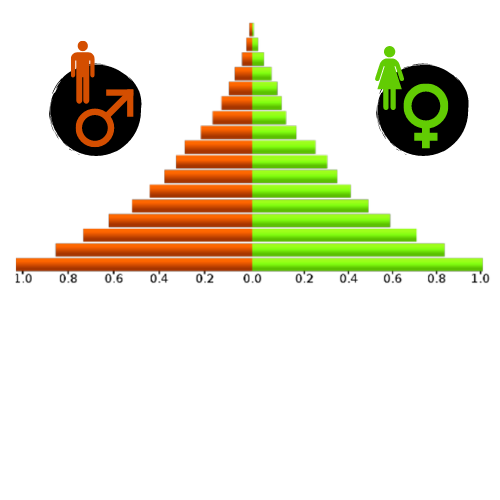Human Resources Class 8 Extra Questions and Answers Free PDF Download
FAQs on CBSE Important Questions for Class 8 Social Science Human Resources - 2025-26
1. What are the most important topics in the Class 8 Social Science chapter on Human Resources for the 2025-26 exams?
For the Class 8 exams, the most frequently asked topics from the Human Resources chapter include:
- The concept of people as a resource.
- Factors affecting the distribution of population, such as geographical, social, and economic factors.
- The components of population change, which are birth rate, death rate, and migration.
- Understanding and interpreting a population pyramid.
2. How should I structure my answer for a 3-mark or 5-mark question from this chapter?
To score well, structure your answers clearly. For a 3-mark question, provide a direct definition and list at least two or three distinct points with a brief explanation. For a 5-mark question, begin with a short introduction, explain four to five points in detail with relevant examples, and finish with a concluding sentence. For instance, when explaining factors of population distribution, address geographical and economic factors in separate points.
3. Why is the distribution of population across the world so uneven?
The world's population is unevenly distributed because people prefer to live in areas where conditions are favourable. Key reasons include:
- Geographical Factors: People are attracted to plains with fertile soil and a moderate climate, rather than harsh environments like mountains or deserts.
- Economic Factors: Areas with better job opportunities, industries, and infrastructure have a higher population density.
- Social and Cultural Factors: Places with good housing, education, health facilities, and cultural or religious significance also attract more people.
4. What is the difference between population growth and population change?
While they sound similar, these terms have different meanings. Population growth refers to the increase in the number of people in a place. Population change refers to the shift in the number of people over time, which can be an increase, a decrease, or no change at all. It is determined by the balance between the birth rate, the death rate, and migration.
5. What are the key factors that cause changes in a country's population size?
The size of a population is altered by three main factors:
- Birth Rate: The number of live births per 1,000 people. A high birth rate leads to population growth.
- Death Rate: The number of deaths per 1,000 people. Improvements in healthcare lower the death rate.
- Migration: This is the movement of people. Immigration (moving into a country) increases the population, while emigration (moving out) decreases it.
6. How can a government influence the population structure of its country?
A government can influence its population through various policies. For example, it can promote family planning programs and improve women's education to manage the birth rate. By investing in better healthcare and sanitation, it can lower the death rate and increase life expectancy. Governments also control migration through immigration laws and by creating economic opportunities to either attract skilled people or prevent citizens from leaving.
7. From an exam perspective, what are the main 'push' and 'pull' factors for migration?
Understanding push and pull factors is crucial for exams. Push factors are negative conditions that force people to leave a place, such as lack of jobs, poverty, natural disasters, or political conflict. Pull factors are positive conditions that attract people to a new location, such as better employment opportunities, higher living standards, safety, and better education or healthcare.
8. Why is a skilled and healthy population considered a nation's greatest asset?
A skilled and healthy population is considered the ultimate resource because people are the ones who use their knowledge and abilities to turn natural things into valuable resources. An educated and healthy workforce is more productive, innovative, and can develop new technologies. They drive the economy and find solutions to national problems, which is why the development of human resources is essential for any country's progress.

























